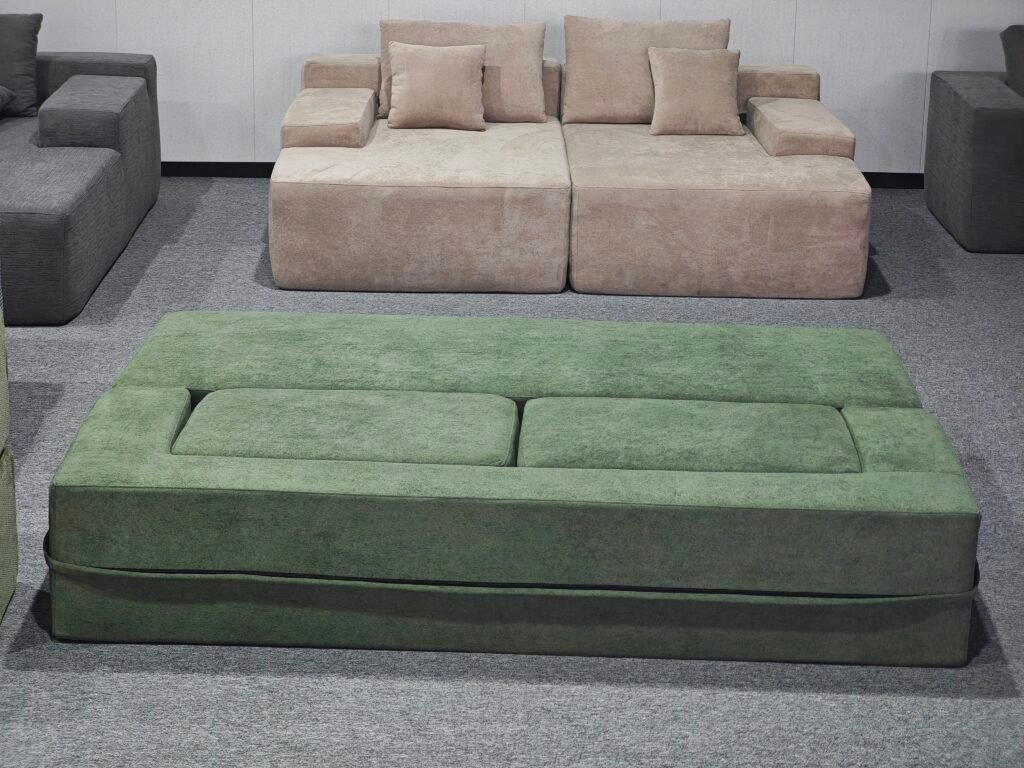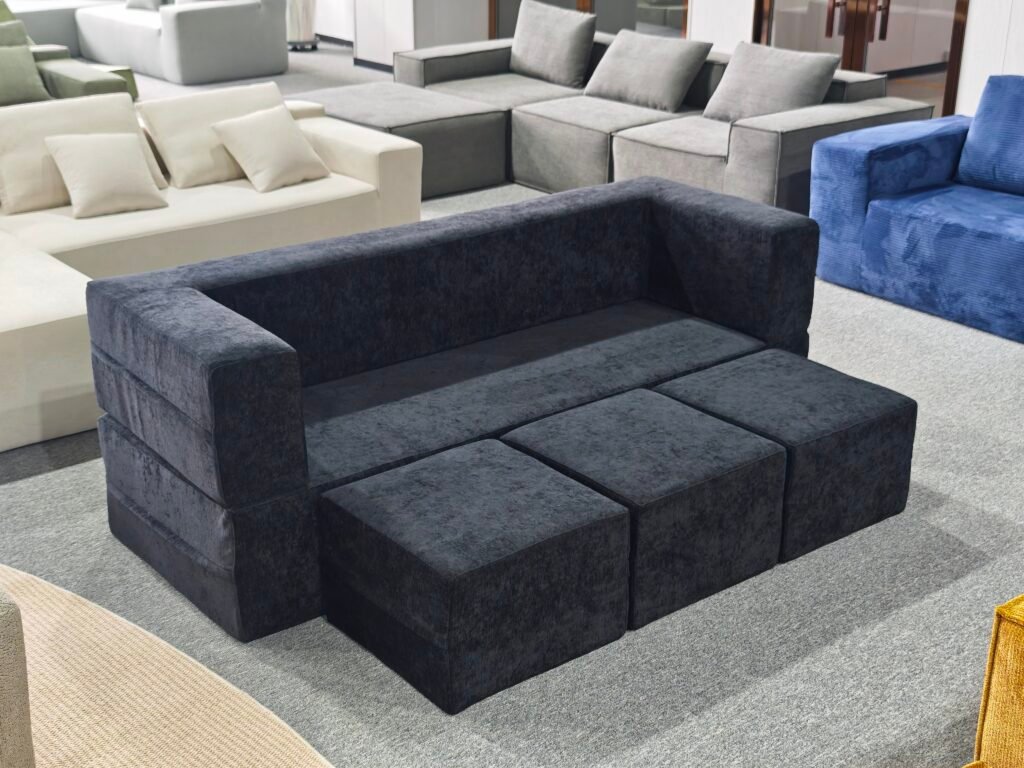

How to Position Compress Sofas in a Multi-Product Furniture Line
The furniture industry is evolving rapidly with changing consumer lifestyles, space limitations in urban living, and advances in manufacturing and logistics. Among the innovations capturing significant market interest are compressed sofas, also known as “sofas in a box,” which offer transformative advantages in shipping, storage, and convenience. As a compressed sofa factory like modular-sofas.com pioneers these products, furniture brands and retailers are eager to strategically integrate compressed sofas into their multi-product lines to maximize profitability, brand differentiation, and customer appeal.
Positioning compressed sofas effectively within a diverse furniture portfolio requires a nuanced understanding of their unique value propositions, target customers, and channel opportunities compared to traditional and other innovative furniture offerings. This article explores the best practices and strategic frameworks that companies can employ to place compressed sofas successfully alongside sectional sofas, modular sofas, flat-pack sofas, recliners, beds, and other audiovisual-enhancing furniture systems that collectively serve diverse end-user needs.
Understanding Compressed Sofas in the Current Furniture Landscape
Compressed sofas fundamentally redefine what furniture shipping and storing means. Fully assembled sofas are vacuum-compressed to reduce their volume by up to 65%, allowing for logistical efficiencies such as four times the container loading capacity compared to regular sofas. Once unpacked, these sofas regain their full shape and comfort characteristics within 24 to 72 hours without assembly hassles.
The core appeal for compressed sofas lies in their:
- Reduced shipping and storage costs, vital for e-commerce and dropshipping business models.
- Compact, space-saving design for small urban dwellings.
- Versatility for hospitality, rentals, and temporary living situations.
- Customizability in fabrics, colors, and multifunctional designs including sleeper sofas and storage features.
However, these advantages also establish positioning trade-offs — compress sofas tend to attract younger or transient customers more than luxury or traditional buyers looking for premium craftsmanship or ultra-durable heirlooms.
Product Line Integration: Establishing the Role of Compressed Sofas
In a multi-product furniture line, it is crucial to deliberately define how compressed sofas complement or contrast with other furniture types. They often occupy a strategic niche rather than compete head-to-head with traditional sofas or premium modular sectionals.
Key aspects to emphasize include:
- Entry-to-Mid-Level Segment: Compressed sofas typically fit between budget flat-pack sofas and fully custom modular sofas. Their affordability and convenience appeal to first-time buyers, renters, and younger consumers.
- Space-Saving & Convenience Product: They address a pain point related to urban living space constraints and delivery challenges, filling a “compact living” product category.
- Gateway Product: Brands may use compressed sofas to build initial customer relationships by offering lower MOQs and faster deliveries, encouraging upsell into traditional furniture or complementary décor items.
- Digital/E-Commerce Focus: Compressed sofas excel in omni-channel retail environments, enabling direct-to-consumer sales and quick market feedback loops.
- Sustainability Positioning: Highlighting eco-friendly materials and packaging amplifies their appeal among climate-conscious consumers.
By setting clear internal categorizations supported by user personas and channel strategies, manufacturers and retailers can maximize efficiency and avoid cannibalizing sales of other products.
Target Market Segmentation and Customer Personas
Effectively positioning compressed sofas is rooted in granular customer segmentation. Different demographic and psychographic groups value furniture attributes distinctly.
For compressed sofas, typical target personas include:
- Urban Millennials and Gen Z Renters: Young professionals in high-density living prioritize affordability, ease of delivery, and multifunctionality. They appreciate modern designs and sustainability credentials.
- Studio Apartment Dwellers: Space limitations require compact furniture that is easily configurable, including fold-out beds and modular units.
- E-commerce Shoppers: Consumers purchasing online favor easy unboxing, minimal assembly, and fast shipping.
- Hospitality and Rental Property Managers: Bulk buyers looking for cost-efficient, space-saving furniture with consistent quality.
- First-Time Buyers and Students: Budget-conscious individuals seeking practical and stylish options.
Each persona demands differing messaging and feature emphasis. Marketing and product development should tailor compressed sofa lines to respond accordingly — whether through fabric choices, color options, price tiers, or bundled offerings.
Brand Architecture and Messaging Strategies
In furniture brand portfolios that contain compressed sofas, maintaining distinct yet complementary brand messaging is vital. This balances the innovative, accessible flavor of compressed sofas with the quality craftsmanship or luxury positioning of traditional furniture lines.
Messaging strategies might highlight:
- Functionality and Innovation: Emphasize ease of delivery, space-saving, and self-expansion technology to differentiate compressed sofas.
- Affordability and Value: Position as cost-effective furniture solutions that reduce overhead for customers without sacrificing comfort.
- Sustainability: Communicate environmentally responsible sourcing, recyclable packaging, and minimized logistics emissions.
- Customization and Style: Showcase customizable options for fabrics, colors, and configurations that rival traditional options.
- Trusted Quality: Leverage certifications and factory excellence (e.g., modular-sofas.com’s ISO 9001, CertiPUR-US foam) to instill confidence in durability.
Marketing collateral across websites, social media, and in-store should consistently reinforce these attributes, carefully distinguishing compressed sofas from other offerings to clarify the shopper journey.


Channel and Pricing Strategies: Aligning Distribution with Positioning
Compressed sofas are uniquely suited to certain distribution channels due to their packaging and logistics advantages. Successful furniture lines position compressed sofas to maximize channel effectiveness.
Key channel considerations:
- E-commerce & Dropshipping: Compressed sofas excel here due to low MOQ, streamlined shipping, and convenience. Online exclusives or curated collections can stimulate sales.
- Brick-and-Mortar Retail: Physical stores can showcase compressed sofas as “innovation zones” or space-saving solutions, enhancing experiential marketing.
- Bulk/Commercial: Hotel suppliers and rental companies require bulk pricing and fast lead times, where compressed sofas compete effectively on cost per room.
- Direct Wholesale: Offer competitive pricing for distributors focused on serving smaller retailers or emerging market regions emphasizing affordable furniture.
Pricing should reflect the value proposition and supply chain savings of compressed sofas, typically positioned below traditional modular sofas but above basic budget flat-pack units. Offering tiered options within compressed sofa lines sustains broad market appeal.
Managing Customer Expectations and After-Sales Support
Clear communication about compressed sofa benefits and limitations is essential to customer satisfaction and repeat business.
Key points to highlight:
- Expansion Time: Customers must understand the 24–72 hour expansion window post-unpacking.
- Comfort & Durability: Explain factory testing for compression cycles and use quality materials certifications.
- Warranty & Support: Transparency on warranty coverage and straightforward return or replacement policies.
- Care Instructions: Provide cleaning guides and maintenance tips tailored to compressed sofa materials.
Effective customer education reduces complaints and encourages positive reviews, amplifying the product’s market reputation.
Leveraging Product Innovation and Customization
Modern furniture customers demand choice and personalization. Compressed sofa factories like modular-sofas.com provide extensive OEM and ODM services enabling customized upholstery, logo branding, accessories such as USB charging ports, and unique sofa configurations.
Positioning compressed sofas as a flexible, customizable furniture line can elevate perceived value and attract business customers seeking differentiation. Innovation in fabric technologies or modular add-ons can keep the product line fresh amid competitors.
Competitive Analysis and Positioning Framework
Understanding how compressed sofas compare to other furniture options sharpens positioning clarity.
| Product Type | Key Strengths | Key Challenges | Target Customer Segment | Price Range | Positioning Focus |
|---|---|---|---|---|---|
| Compressed Sofa | Space-saving, cost-efficient shipping, easy set-up | Slight delayed expansion, perceived as budget | Urban renters, e-commerce buyers | Entry to mid-range | Practical innovation, convenience |
| Flat-Pack Sofa | DIY assembly, affordability | Assembly complexity, durability concerns | Budget-conscious DIYers | Entry level | Low cost, customizable assembly options |
| Traditional Full Sofa | Premium materials, air-shipped precision | High shipping/logistics costs | Luxury buyers, homeowner long-term | Mid to high-end | Quality, longevity, craftsmanship |
| Modular Sofa | Highly customizable, scalable | Higher cost, complex logistics | Commercial buyers, large homes | Mid to luxury | Flexibility and design personalization |
| Recliners / Specialty Sofas | Comfort-focused, unique features | Niche appeal, usually higher priced | Older demographics, niche buyers | Mid to high-end | Comfort and specialty use cases |
This comparison guides marketing and product development decisions about where compressed sofas fit in the line-up and how to communicate their advantages.
Building Synergistic Cross-Sell and Upsell Opportunities
Compressed sofas can serve as an entry product funneling customers toward surrounding furniture categories.
For example:
- Bundle compressed sofas with complementary items like coffee tables, floor lamps, or area rugs to create lifestyle sets that transform small living areas.
- Upsell customers observing their space needs toward larger modular or traditional sofas once settled.
- Develop loyalty programs rewarding repeat purchase across the furniture line.
Cross-category promotions at retail and online increase average order values and deepen brand engagement.
Sustainability and Corporate Social Responsibility (CSR) Integration
Highlighting environmental advantages of compressed sofas aligns with modern consumer values and enhances brand equity.
Communicate through:
- Eco-friendly packaging and recyclable materials
- Reduced carbon emissions from efficient shipping and logistics
- Durable and certified safe materials (e.g., CertiPUR-US foam)
- Transparent supply chain practices, ethical manufacturing
Incorporating CSR into positioning campaigns differentiates compressed sofas in competitive markets, leveraging modular-sofas.com’s certifications and sustainability efforts.


Implementation Roadmap for Furniture Brands
To effectively position compressed sofas in a multi-product line, brands should:
- Conduct market research identifying unmet customer needs regarding space, price, and delivery expectations.
- Design modified product lines or variants addressing multiple user segments, combining compressed sofas with other furniture lines tactically.
- Train sales teams extensively on product knowledge and positioning messages.
- Refine marketing campaigns emphasizing key compressed sofa benefits augmented by showroom or virtual experiences.
- Monitor customer feedback data and adjust product positioning or feature mix accordingly.
- Foster strategic partnerships with compressed sofa factories like modular-sofas.com for continuous product innovation and supply chain optimization.
Summary Table: Factors Influencing Positioning of Compressed Sofas in Multi-Product Lines
| Factor | Considerations | Strategic Positioning Implications |
|---|---|---|
| Target Market | Urban, small-space dwellers, e-commerce shoppers | Position for convenience, affordability, and trendiness |
| Price Point | Competitive pricing between flat-pack and traditional sofas | Maintain value-for-money perception |
| Delivery & Logistics | Maximize cost and efficiency advantages | Emphasize fast shipping, low damage risk |
| Product Features | Space-saving, multi-functionality, customization | Highlight practical innovations and personalization |
| Brand Messaging | Innovation and sustainability | Leverage green credentials and tech-forward image |
| Sales Channels | Online, retail, commercial bulk | Adopt multi-channel marketing plans tailored to channel |
| Customer Education | Manage expectations on unpacking and comfort | Provide support and guides to reduce returns |
| Competitive Analysis | Differentiate from DIY and traditional sofas | Clarify unique advantages in promotional materials |
| Cross-Product Synergies | Promote bundled sales and upsells | Develop lifestyle and solution-based marketing |
| Manufacturing Partners | Collaborate with quality compressed sofa factories | Ensure product innovation, supply reliability |
Conclusion
Positioning compressed sofas within a multi-product furniture line requires a carefully calibrated strategy that recognizes their unique strengths, target markets, and logistical benefits. By differentiating compressed sofas as space-saving, conveniently delivered, and sustainably produced furniture options, brands can capture emerging consumer trends and expand market reach.
Collaborating with expert compressed sofa factories like modular-sofas.com, which provide flexible OEM/ODM customization, stringent quality standards, and eco-conscious manufacturing, empowers furniture businesses to develop compelling product assortments that coexist harmoniously with traditional, modular, or specialty furniture offerings.
Integrating clear customer segmentation, strategic pricing, channel optimization, and engaging marketing narratives enables businesses to maximize the value of compressed sofas while building enduring customer relationships that promote loyalty and growth in an increasingly competitive industry.
If assistance is needed in developing tailored positioning strategies, merchandising plans, or marketing materials for compressed sofas within multi-product lines, expert consultation and partnership with modular-sofas.com can provide comprehensive support.
Should you desire expanded content such as case studies on market success, detailed consumer persona profiles, or specific trade channel recommendations, I would be glad to assist.